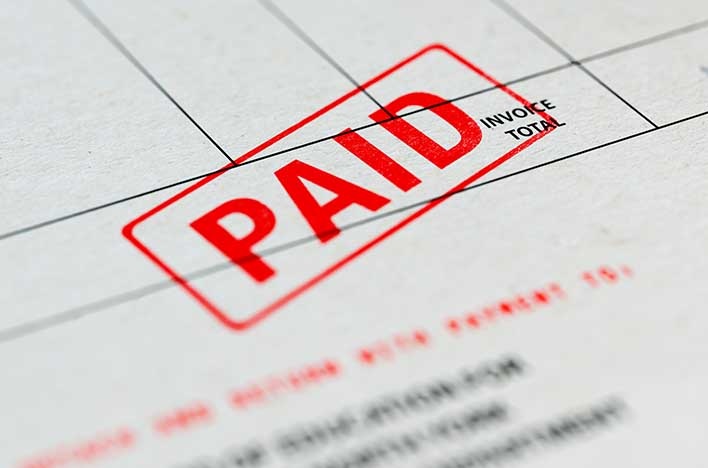These strategies will help you boost your cash flow.
Do you ever wish you could just push the “easy button” and your customers would pay on time? For many business owners, collecting accounts receivable is a struggle, but it doesn’t have to be. The key to maintaining your cash flow and keeping your business afloat is consistency.
Here are 10 strategies to help you get paid in a timely fashion.
Consider the Cloud // Moving to a cloud-based service will improve your billing efficiency. Not only is email faster than traditional mail, you can also automate much of the process. Many services, for example, can be set up to send out late payment reminders without your intervention. Customers can also pay online, beaming the payment straight to your bank account. Using a cloud-based service could help you receive your money four to five times faster than normal.
Get Organized // Take time to assess your invoicing procedures, and make sure that you are sending invoices promptly. Also, look at your customer needs. Some companies may be able to pay several, smaller invoices faster than one big invoice. Consider progress billing—seeking payment for the percentage of work that has been completed rather than waiting until the entire project is complete.
Set Credit Limits // Perform credit checks on prospective customers. If the results show too much risk, you may want to pass on the business. Also, contemplate offering moderate terms with the possibility of eventually working up to more flexible terms. Remember that not all customers should have the same credit terms. Credit terms should be set based on factors such as the financial strength of your customers and their reputation in the marketplace.
Put It in Writing // You can’t hold a customer accountable for being delinquent if the terms aren’t clearly spelled out. If you are requesting payment within 30 days, make sure it is in the contract and on the invoice.
Encourage Prepayments // Some companies require prepayments. Others have all customers pay in advance. You might also consider setting up an electronic funds transfer (EFT) from their bank account.
Incentives // A little reward can go a long way. Offer a trade discount for prompt payment, such as terms of 2 percent net 10 (a 2 percent discount if the invoice is paid within 10 days). You may also want to consider adding a monthly finance charge for late payments.
Communicate // We live in a social media world. Go online and “follow, like or connect” with your customers. Take note of any big occasions such as birthdays, a new store opening or a product launch. By connecting with them on a more personal level, you can build a relationship beyond business. This emotional bond will make it harder for them to avoid you on a payment.
Be Proactive // Don’t wait for an invoice to become past due in order to collect. Flag all new customers in your database and use a courtesy call as a way to gently remind them for the first two months. After that, set up email payment reminders including the due date and forms of payment accepted.
Statements // Normally, statements are sent monthly or anytime a customer has more than one invoice outstanding. Statements allow customers to see all the invoices and payments between two dates.
Collections // After the first missed payment, it’s time to pick up the phone and make that collection call. Don’t be afraid to ask a customer for payment. Prepare to hear excuses, but most importantly, remain professional. Don’t let the customer off the phone without either taking a payment or scheduling one for an upcoming date.
Just remember to keep focused on any outstanding payments owed to your business. Your ability to manage your receivables will have a direct impact on your company’s cash flow and its overall financial health.

